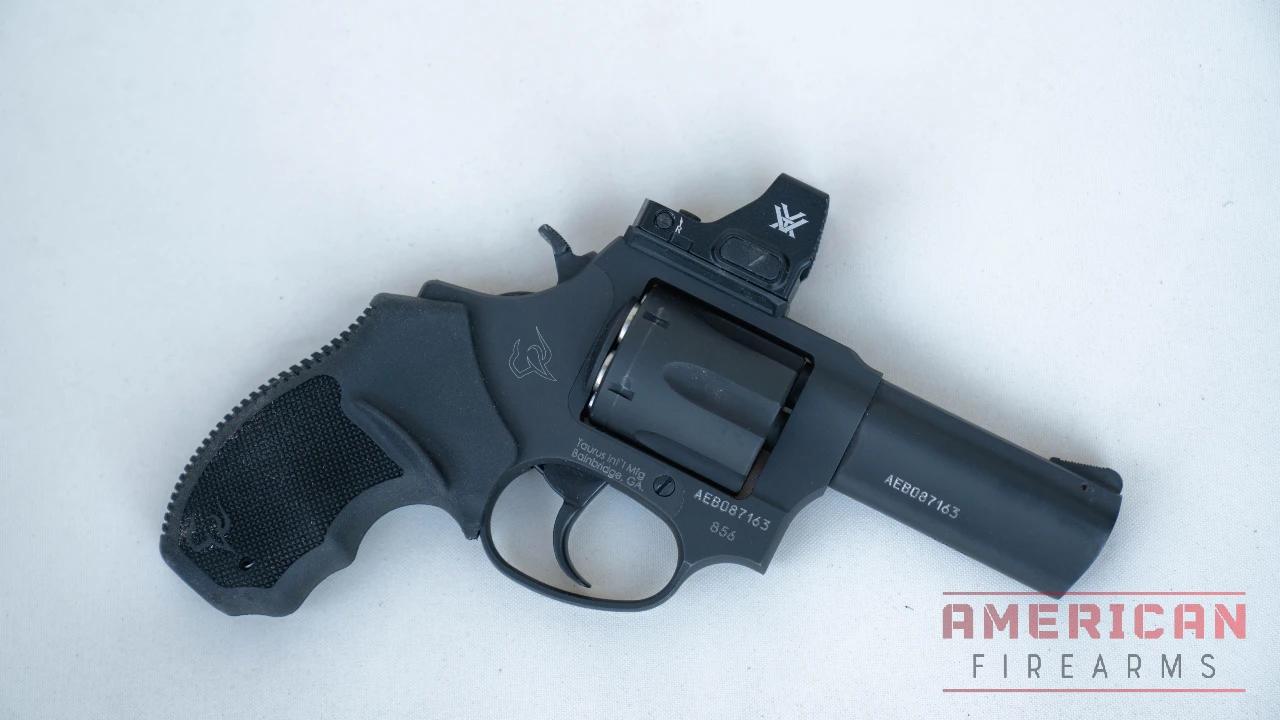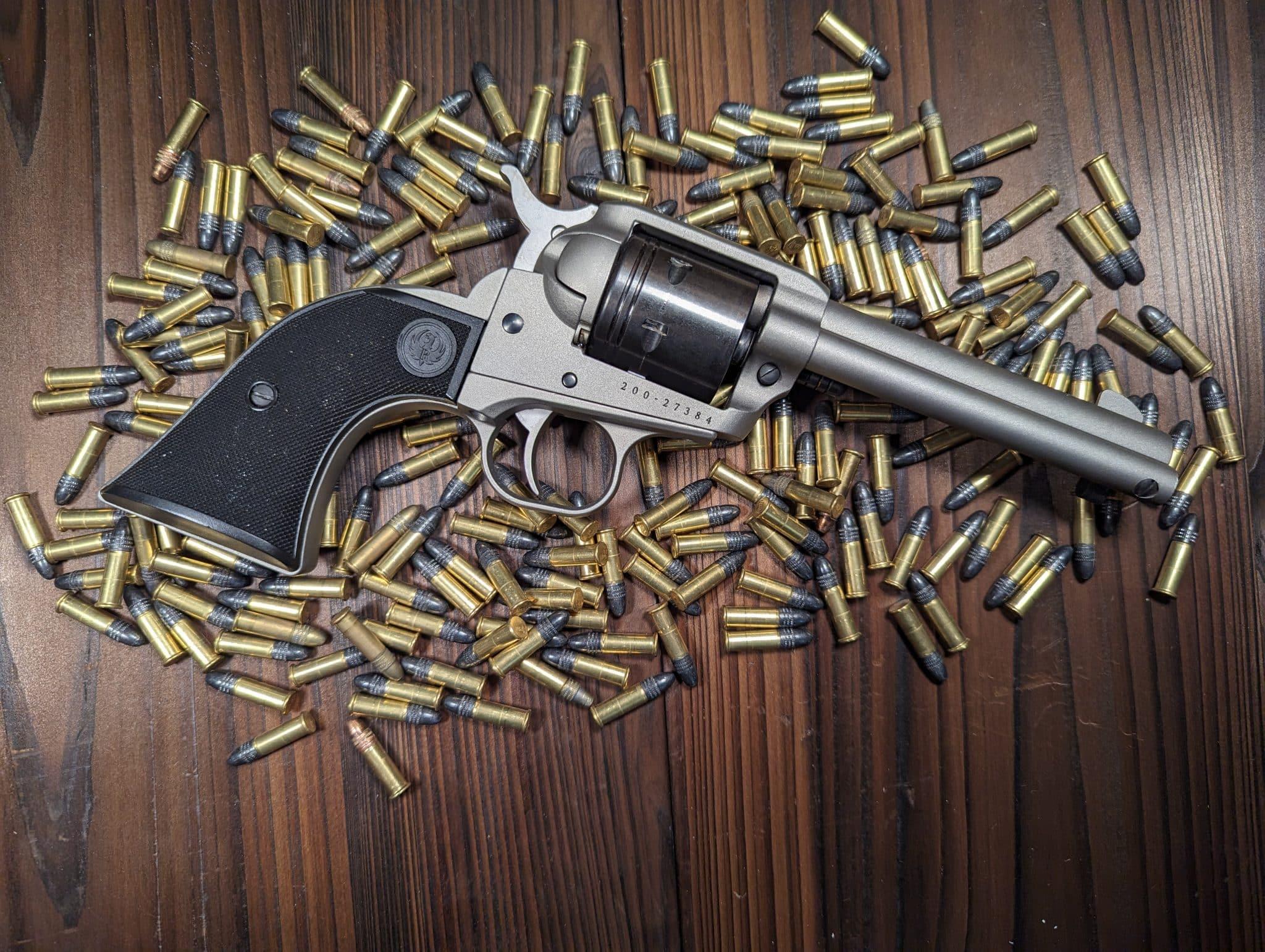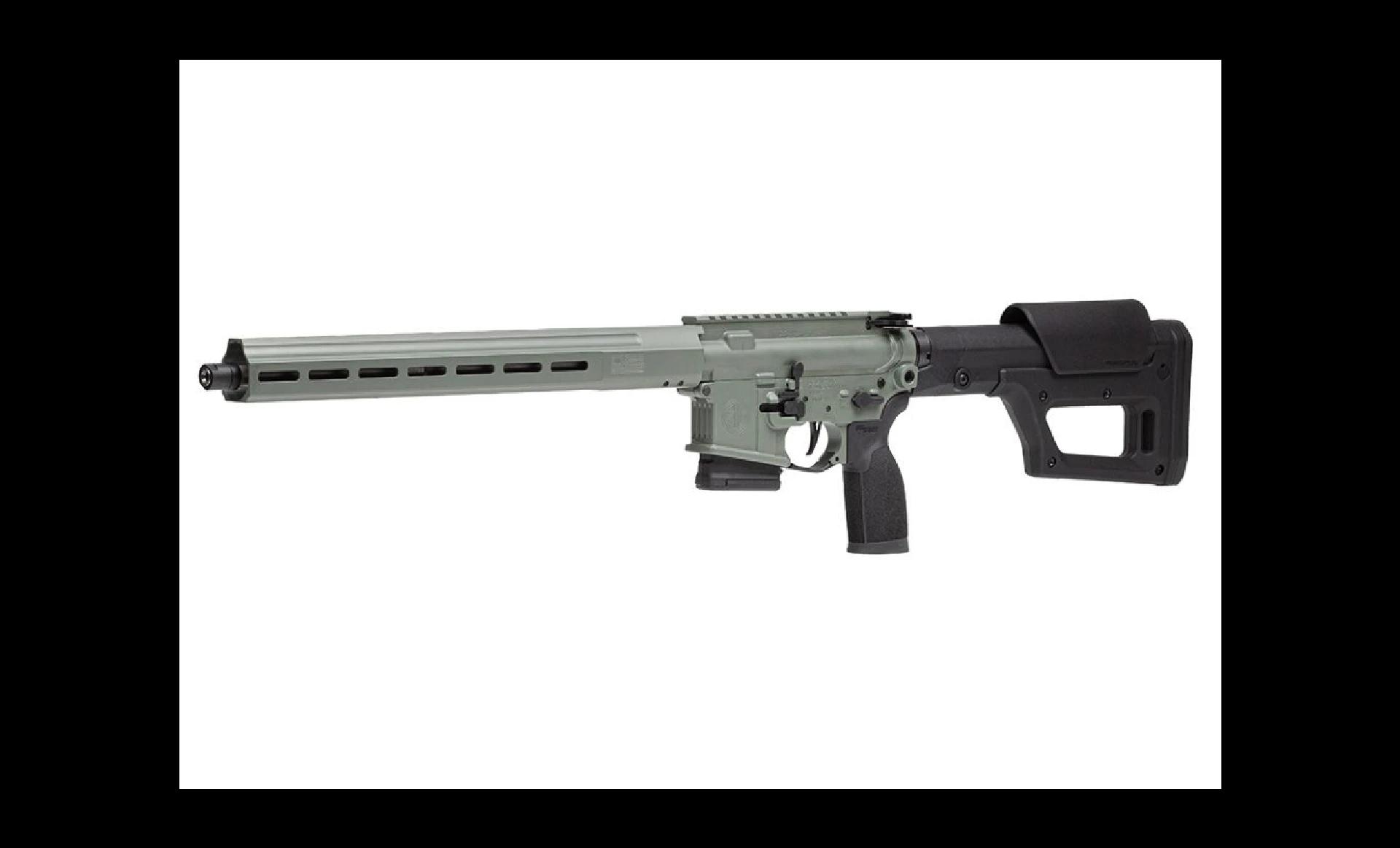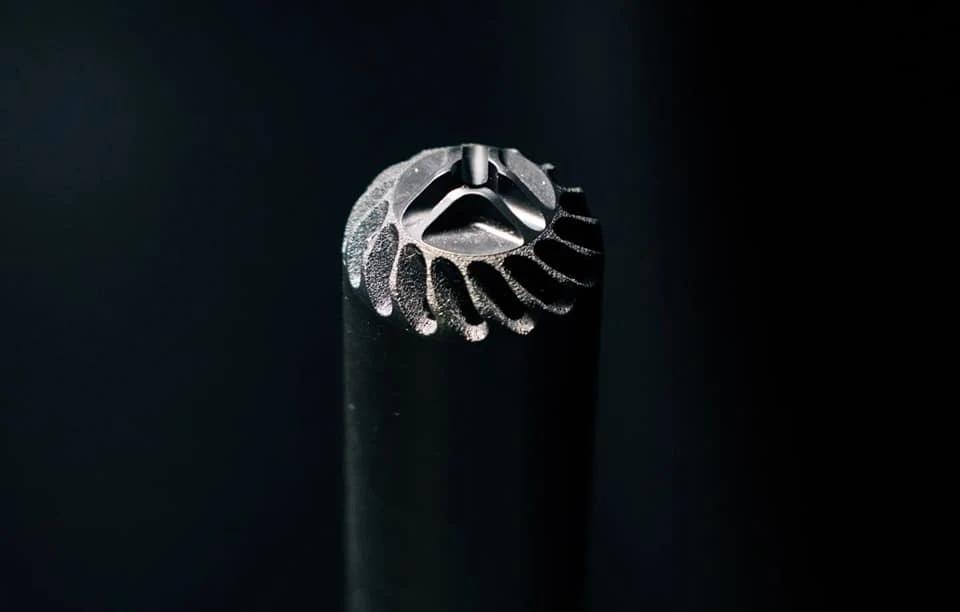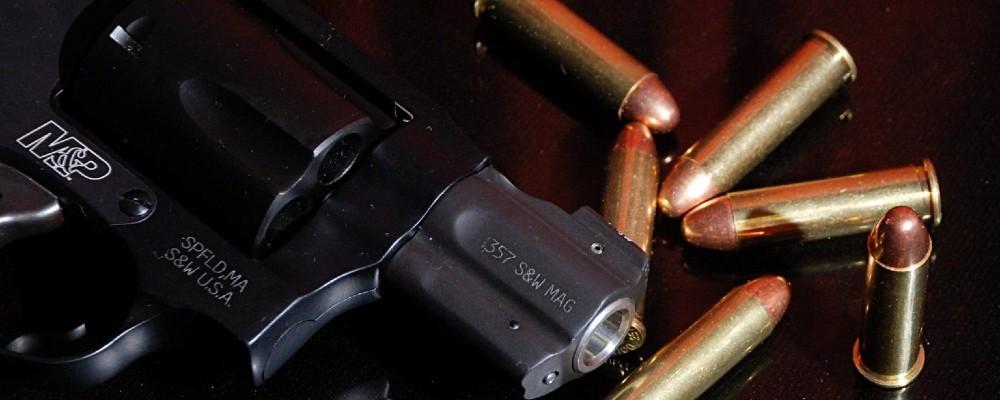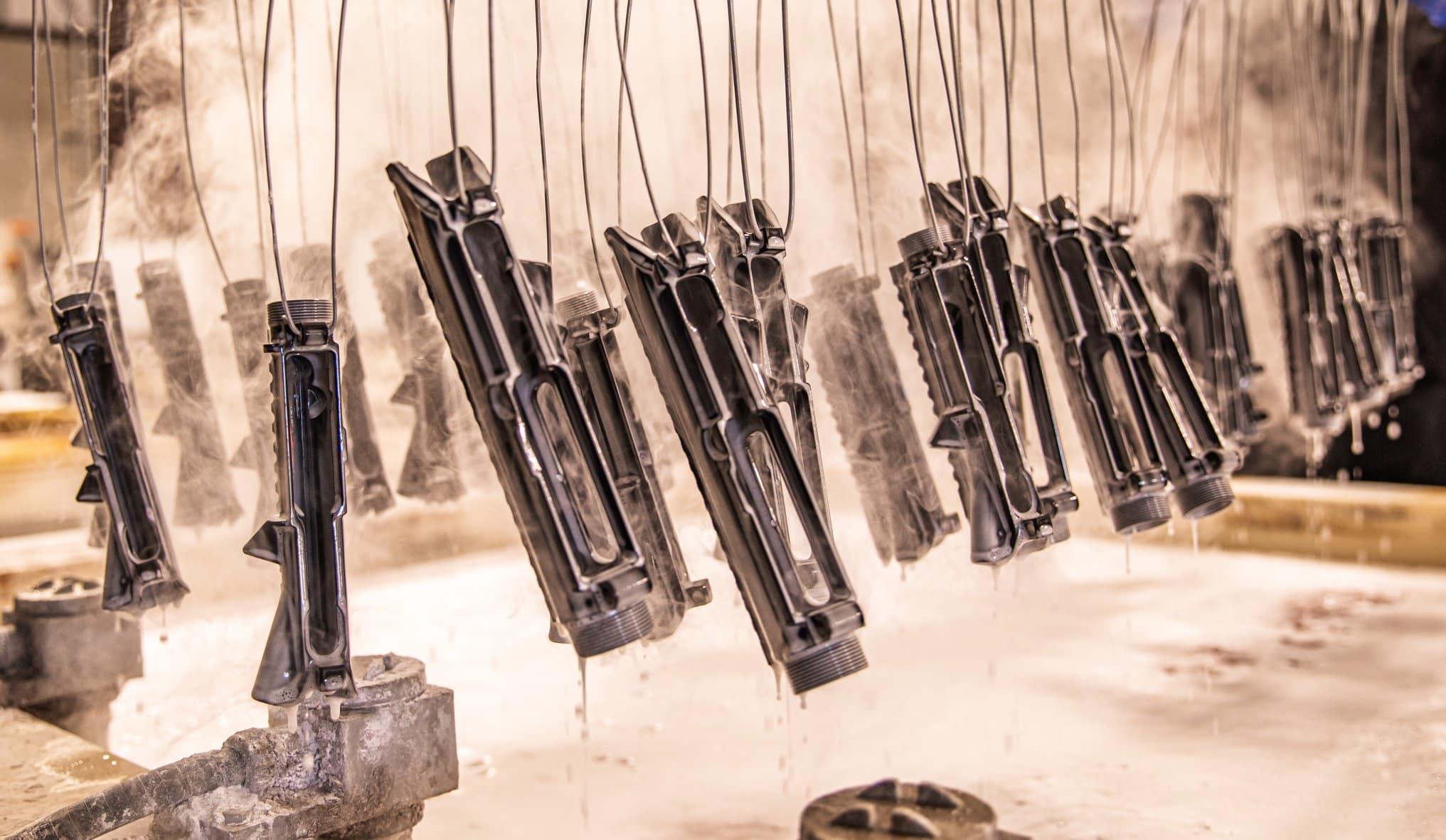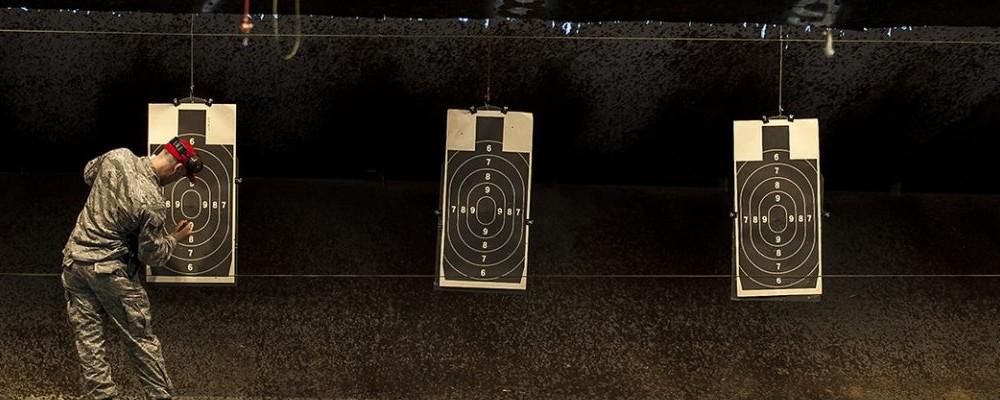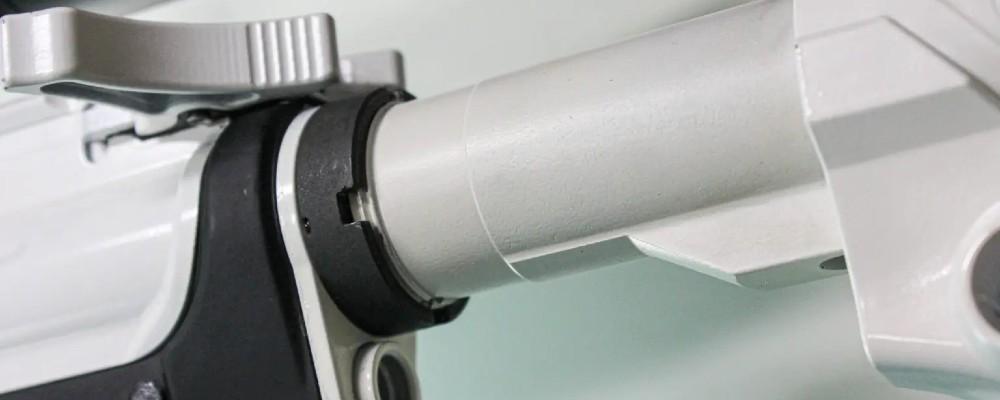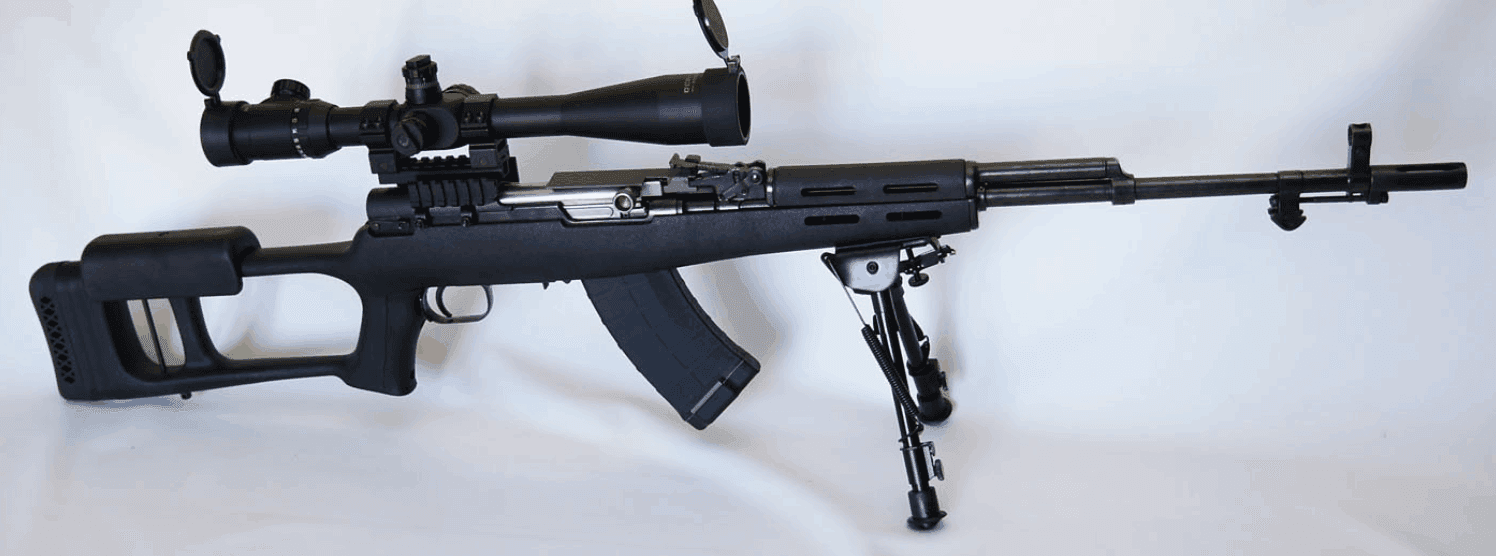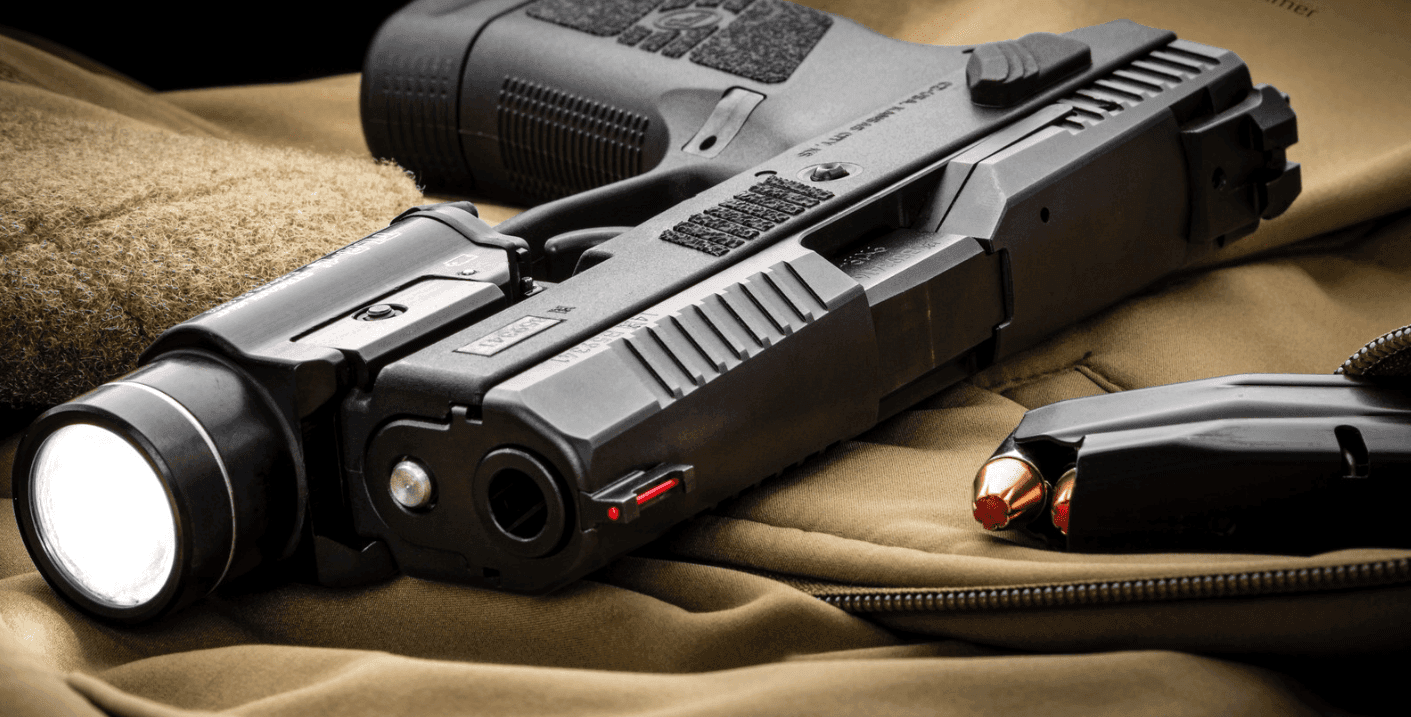300 Blackout vs 5.56: A Comparison
Written By
Michael Crites
Licensed Concealed Carry Holder
Reviewed by
Editorial Team
Learn About The Editorial Team
Share:
Products are selected by our editors. We may earn a commission on purchases from a link. How we select gear.
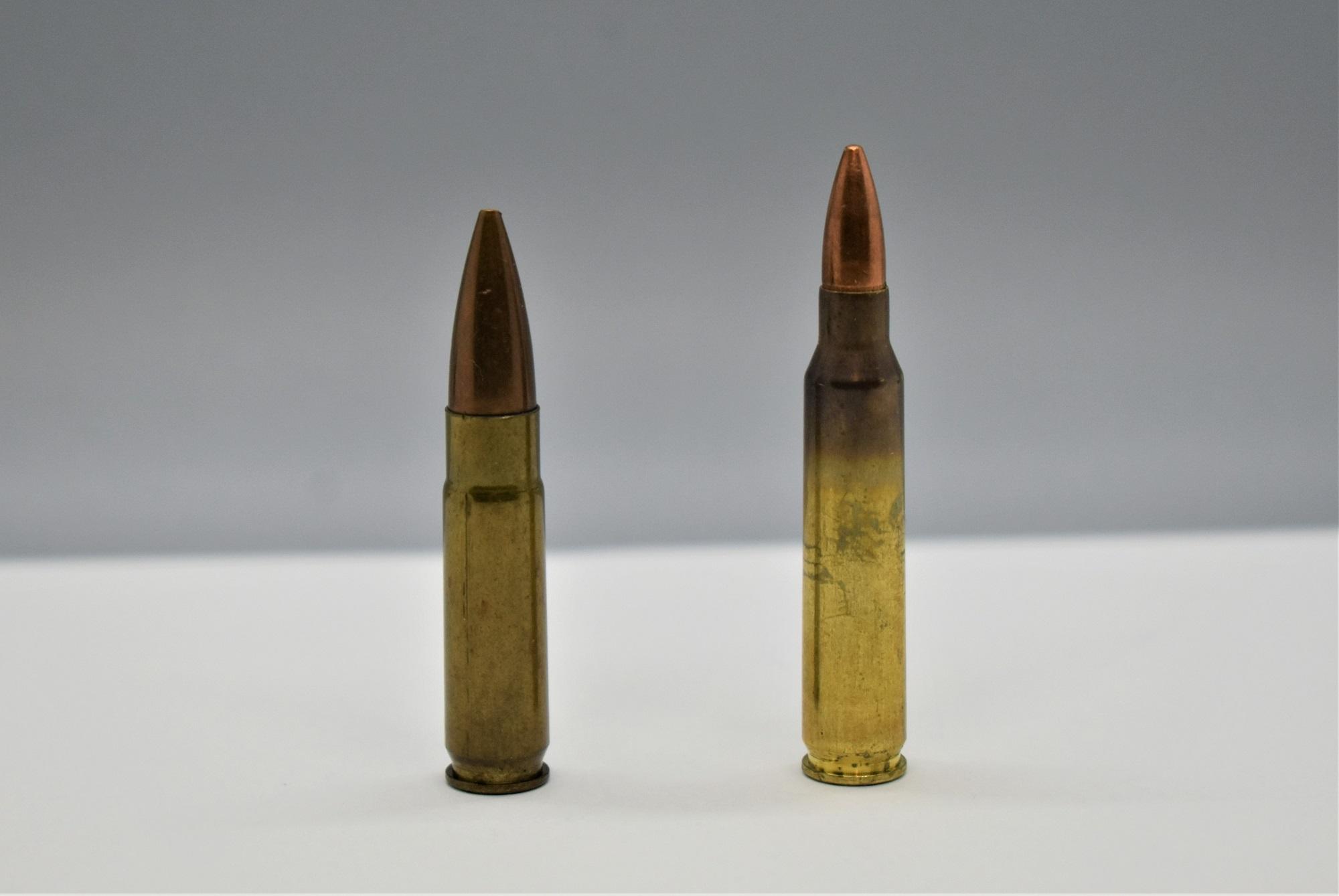
Updated
May 2025
Headstamp-to-Headstamp is our series aimed at helping you grok everything ammo.
Today, two of the most popular caliber choices for AR-15 style rifles and pistols are in the go-to standard that is 5.56 NATO, and the newer, but no less versatile, .300 AAC Blackout.
Choosing between the two takes a little thought and boils down to the intended purpose the gun is set to fill, with the two calibers being very different in background, terminal ballistics, performance, and use.
In This Article
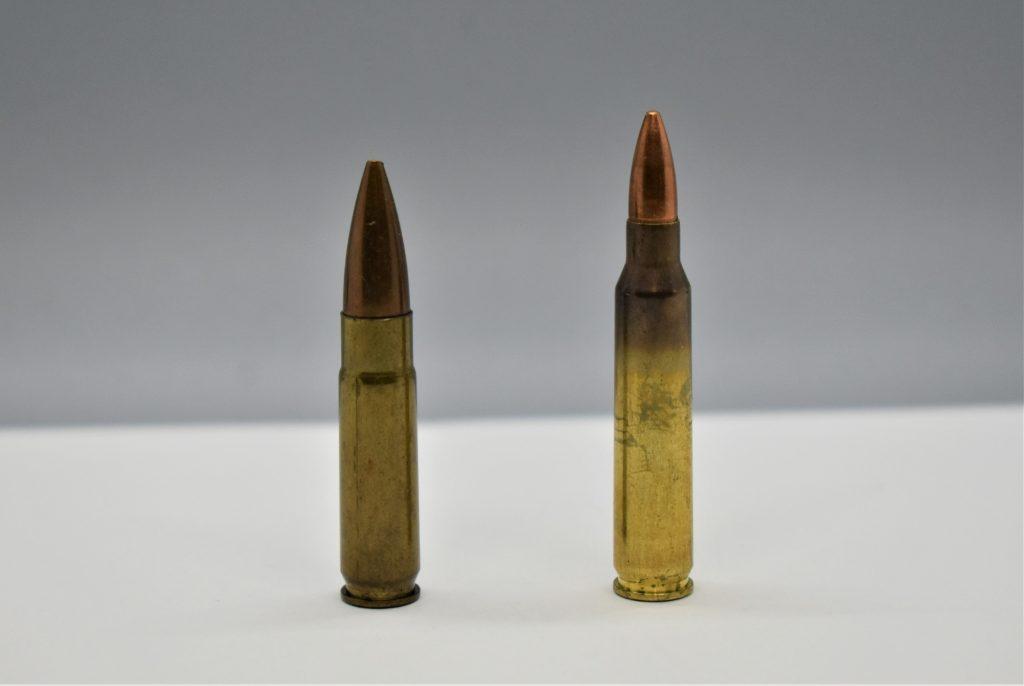
What is .300 Blackout?
Back when it was a brilliant suppressor maker, Advanced Armament Company developed a new 7.62x35mm cartridge and weapon to use it (a modified AR-style platform) to spec for an unnamed special operations unit in 2009.
Said unit wanted a .30 caliber AR-style platform that was both reliable and suppressor-ready and AAC’s Robert Silvers met the need with the original Low Visibility Carbine (AKA Honey Badger) proposal. At the time, Navy SEALs and Army Delta’s operators used as their go-to CQB blaster the Heckler & Koch MP5-SD, an integrally suppressed 9mm submachine gun, for self defense & close-in action at bad-breath distances.
However, short-barreled rifles like the Honey Badger upped the game a good bit by producing a short-barreled M4 carbine (optimized for just 9-inch barrels) that delivered similar performance to an AK47 (which fired the 7.62x39mm round) at ranges out to 200 yards and could do so quietly — offering supersonic and subsonic speeds.
Best yet, the new round could be used in standard AR15/M4/M16 lowers and feed reliably in a STANAG magazine with no modifications.
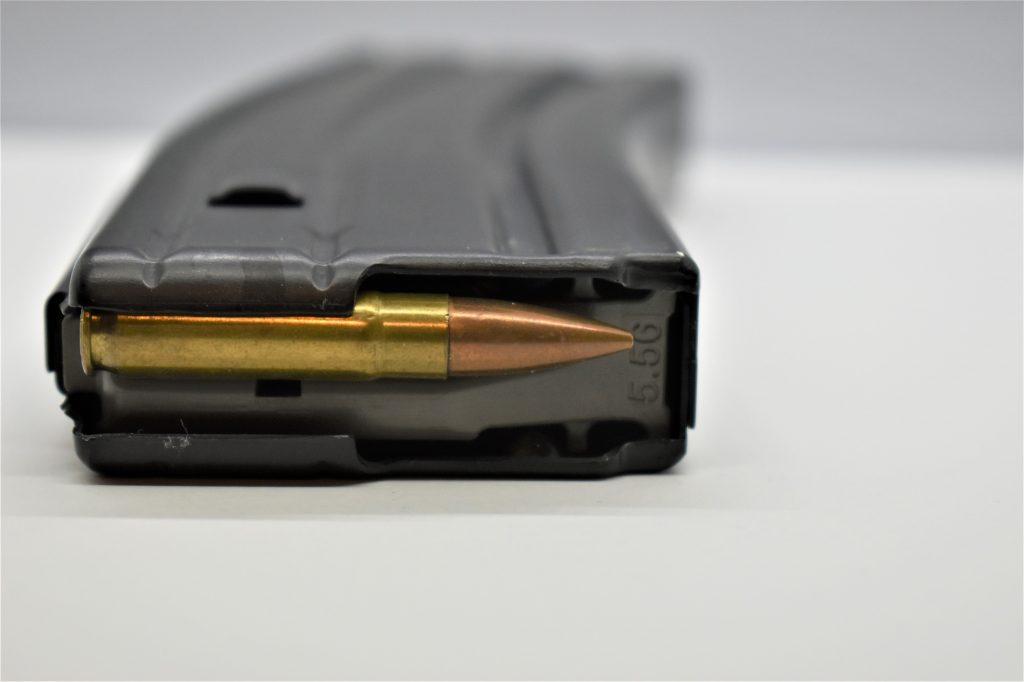
Released to the commercial market in 2013 as the .300 AAC Blackout, AR makers have been fast to respond to the caliber and today over 60 companies produce guns chambered for the round.
Similarly, the cartridge has been standardized and ammo makers have added the .300 BLK to their catalog in loads ranging from ultralight supersonic 78-grain bullets that push 2,800 fps velocity to big 220-grain subsonic ammo that barely break 1,000 fps, showing the amazing capability that the design holds within the hunting medium, home defense, or when navigating under the speed of sound.
What is 5.56 NATO?
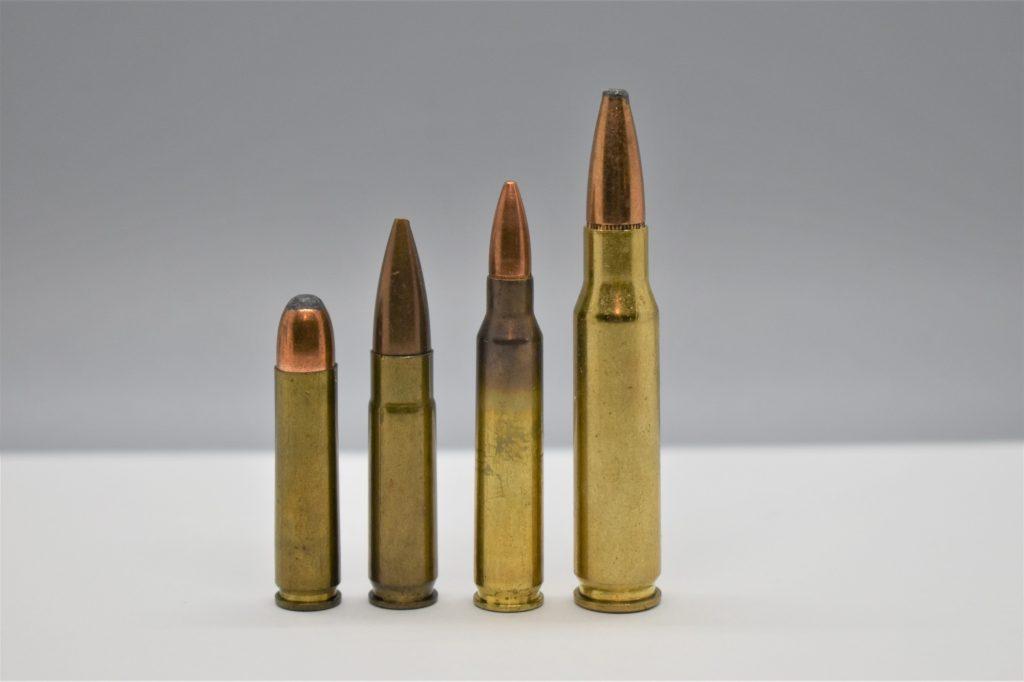
Going back to 1957, Eugene Stoner, inventor of the Armalite AR10 rifle, was working on scaled-down carbine variants that used a .222 Remington, a fast bottleneck cartridge introduced a few years prior for use with varmint hunters and in benchrest rifles.
Meanwhile, within a few years, Remington would get to work on their .222 in conjunction with a request by the Army to design a new infantry rifle round which led to the .222 Remington Magnum, which was used with the early prototypes of Stoner’s AR15, and then further modified to the 222 Remington Special, which is today’s .223 Remington, standardized in 1962.
From this .223 Remington round, the military 5.56 NATO, which is loaded to a higher pressure than commercial. 223, was developed and classified.
Today, the 5.56 NATO is one of the most common centerfire cartridges on the market, capable of running everything from light 35-grain bullets which can touch 4,000 fps to 77-grain bullets which still run in the 2,775-fps range.
How do they compare?
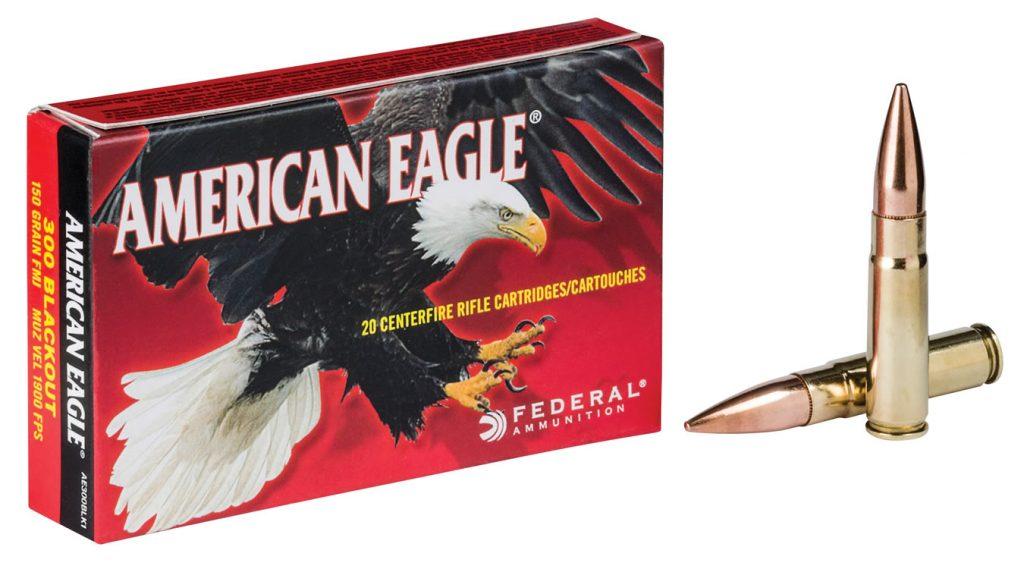
As a median, let us compare two of the most common loads from the same top-shelf domestic ammunition manufacturer, Federal. The company’s generic .300 BLK is a 150-grain American Eagle red box, using an FMJ BT bullet.
When it comes to 5.56 NATO, Federal’s staple offering, sold in bulk, is their 55-grain American Eagle load, also using an FMJ BT bullet. Sure, you can get better ammo in both calibers, you can also get much worse.
However, as these are arguably among the most frequently encountered American-made factory loads in their respective calibers on the market, you get a good baseline for comparison.
.300 Blackout vs 5.56: Ballistic Performance Charts

As you can see by the chart, both loads tend towards running out of gas after 500 yards, shedding velocity. What can be seen in another chart is the drop over that range, which paints a broader picture of what happens to the bullet over that range.

As seen above, the heavier .300 BLK and the lighter 5.56 load shoots flat at 200 yards and are both still on target at 300 yards, then starts to rainbow at much different rates.
At 500 yards, the .300 BLK has a bullet drop of some -114.5 inches, or almost 10 feet, compared to the 5.56’s -50.3 inches, or just over four feet — indicating the 5.56mm NATO shoots flatter at range. What you can take away from this is that the long-range (to 500 yards) accuracy potential of the smaller 5.56, due to its high velocity, is greater than the .300s.
Departing from our two-load control group, using long 77-grain loads on the 5.56 with a barrel twist rate that can wring the most from it, such as a 1:7-inch twist, the 5.56 can still prove exceptionally accurate to 600 yards, an act that the .300 BLK has a hard time following.
But how much energy do the rounds retain at those ranges?
.300 Blackout vs 5.56: Power Curve
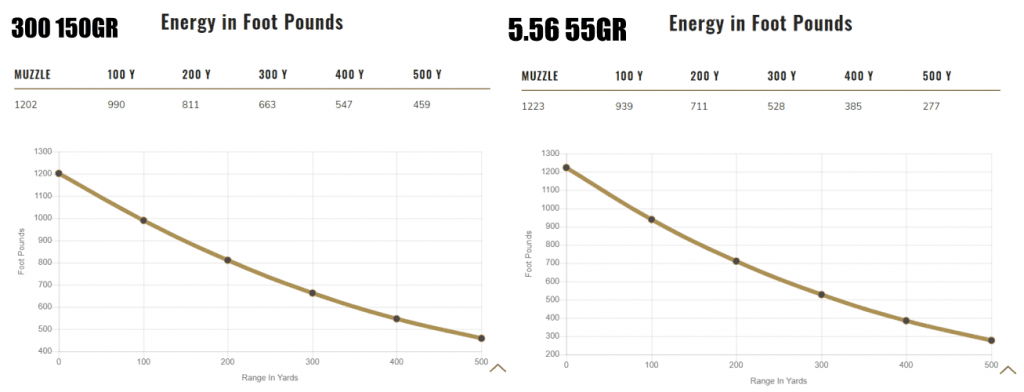
At the muzzle when comparing the two rounds, you get an interesting lesson in physics, with the superfast velocity of the 55-grain bullet on the 5.56mm NATO generating almost the same foot-pounds of energy as the 150-grain bullet of the .300 BLK.
However, the heavier Blackout retains more of that energy downrange, having over 130 ft./lbs. more than the 5.56mm round at 300 yards, and 180 ft./lbs. more at 500 yards.
In short, the baseline Blackout has 60 percent more foot pounds of energy per round at 500 yards than the 5.56 and is akin to the 7.62x39mm M43 round used around the globe by the AK47.
This makes the .300 BLK round one of the most powerful cartridges that can be fired from a standard-length AR-15 lower.
Plus, what isn’t shown in the charts, is the common sense that the bullet on the .300 BLK, being three times the mass and with some 90-percent larger bullet area, is going to generate a more significant wound channel and cavity on average at every range, and retain more weight in that process, thus producing better terminal performance while offering the potential for better barrier penetration.
While a true “barrier blind” 5.56 is tough to find, the .300 BLK is often capable of penetrating several inches of hard target that would greatly impair the smaller round.
.300 Blackout vs 5.56: Suppressor Use

Besides specialist custom subsonic ammunition unicorns such as the EBR 5.56 Ultra Stealth and the Silent Strike 556 100-grain Hybrid, both commercial and military 5.56 NATO loads are supersonic in performance, meaning they will “crack” when breaking 1,126 fps in velocity when fired from an AR platform rifle (or any other).
That doesn’t mean 5.56 can’t be used in carbines and pistols equipped with good suppressors; they just can’t be made as inherently quiet as low velo .300 BLK offerings. The Blackout is simply easier to suppress.
Keep in mind the latter cartridge was developed by a suppressor maker and heavy subsonic loads abound for the .300 BLK such as the HUSH 220-grain HPBT from Freedom Munitions, which is marketed as being an ideal hunting round at ranges under 100 yards.
Further, the .300 works exceptionally well in shorter barrels, whereas you can’t say the same about 5.56.
.300 Blackout vs 5.56: Hunting Use
As we touched on, the 5.56 NATO sprang from what was essentially a varmint round, meant to be laser accurate against small-to-medium-sized game such as groundhogs and coyotes with a short time of flight, the cartridge mitigates wind drift and has little shift in point of aim at ranges under 300 yards, with an effective range well beyond that.
The .300 Blackout, with a bullet typically in the 110-180 grain range, on the other hand, will certainly work for small game but is also sufficient for larger game such as adult feral hogs, white-tailed deer, and black bear, particularly at ranges under 200 yards, where the round is flat-shooting and brings a truckload of energy along with it, rivaling the old standby .30-30 Winchester which has been doing such harvesting for a century at similar ranges.
.300 Blackout vs 5.56: Pistol Use
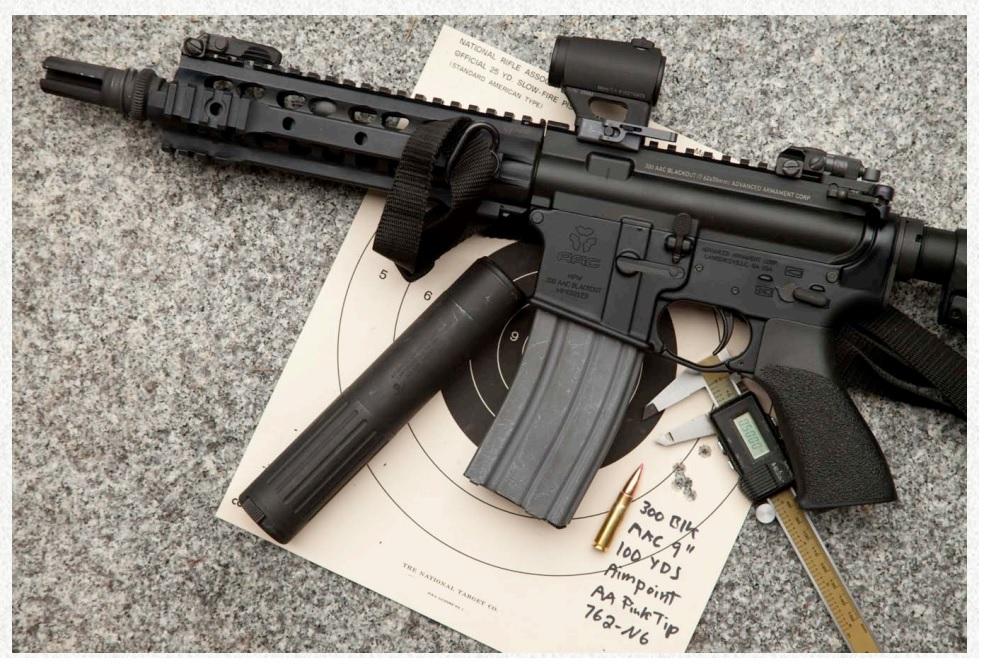
Extensive testing by some of the smartest guys in the firearms industry has shown the 5.56 to have a barrel length sweet spot, insomuch as performance goes, at around 14.5-inches in length.
Drop to a shorter barrel and the cartridge dumps velocity and resulting energy rapidly, meaning that AR pistols, especially with those using barrels shorter than 10-inches, are pushing more into the category of being a fire-breathing range toy than a practical tool.
At the same time, the .300 BLK, going back to its Honey Badger inception in a platform that was the size of a submachine gun, can still excel with the right load out of even 8-inch barrels, provided you have the right twist rate and gas port sizes.
Widely available commercial loads that still have 1,000 ft./lbs. of energy from a pistol-length firearm is a solid reality whereas 5.56 in the same length barrel is more of a 600 ft./lbs. prospect.
.300 Blackout vs 5.56: Price Per Round
In general, given the 5.56 NATO’s relative ubiquity and time in market, its one of the less expensive AR rifle rounds available, generally running under $0.50 per round (when not in the the midst of an ammo crisis brought on by a global pandemic.)
.300 BLK, on the other hand, is a newer round with lower demand and less production than the 5.56 NATO, which, while popular enough to not be in the specialty realm of some other cartridges, does tend to increase the price over the ubiquitous 5.56 NATO round. You’ll often find .300 BLK rounds priced at the $0.60-$0.75 range, but with the 2020 ammo crunch, it was not uncommon to see prices well over the $1-per-round range. Ouch,
5.56 Shortcomings
When you put a box around the life story of the 5.56 NATO cartridge, you see a story of a round that was created to perform with a rifle that it will always be linked to and, likewise, has evolved alongside.
The 5.56 of the 1960s is, as the first generations of AR-15s of that era, far and away different from what is common today. Still, despite over 70 years of growth and changes brought about by more modern bullet design and propellant technology, the 5.56 remains inside the same box of limitations it has always had: low bullet weight when compared to other rifle calibers and reliance on extremely high speeds to keep it viable.
While rifles chambered in .223 Wylde and optimization for longer-length bullets with a better ballistic co-efficient promise further bumps in performance for the 5.56, it will exist in the same box as always.
Notably, the writing may be on the wall to phase out the military’s reliance on the round, with the Army’s new Next Generation Squad Weapon program, set to replace the M16 rifle, M4 carbine and the M249 SAW light machine gun– which are chambered in 5.56 NATO– with innovative new platforms that use a 6.8mm cartridge that offers a bullet weight in the 135-grain range, roughly twice as much as the standard 5.56 load.
In the end, the 5.56 may turn out to be your grandpa’s round in another decade, still relevant, just like .30-30 Winchester and .40S&W are for certain purposes, but no longer on the leading edge or embraced by military and law enforcement pros.
Pitfalls with the .300 Blackout
At the end of the day, the .300 Blackout brings intermediate cartridge performance, mimicking the Russian 7.62x39mm round in many ways, to a standard AR-15 lower and cross-compatible magazine, allowing those who love “America’s Rifle” an upgrade that is as simple as swapping out an upper receiver.
The cartridge is also many times more versatile than the 5.56 NATO– which is handicapped by its bottlenecked case– and can accommodate up to 220-grain bullets, which are three times the size of the largest common 5.56 loads.
However, there is a fly in the ointment in the form of gravity, as those big fat bullets of the .300 Blackout seek out the earth rapidly at longer ranges, with the common 150-grain Blackout load dropping more than twice as much at 500 yards as a 55-grain 5.56 load. A distance performer she is not — but the close quarters and home defense implications are obvious.
Final thoughts
Both 5.56 NATO and .300 Blackout bring a lot to the table in terms of performance, with each typically shooting flat and accurate out to 200 yards from a carbine-length barrel. W
Whereas the Blackout delivers a more barrier-blind terminal effect per round than the slighter 5.56 and carries both better terminal ballistics and more energy along for the ride at longer distances, the smaller, faster-moving bullet of the 5.56 edges out the .300 Blackout round in practical accuracy at those same distances.
From a short barrel, such as in an AR pistol or SBR, the Blackout is a hands-down winner when stacked against the 5.56.
In the end, the choice is up to the user. We opt to go for (at least) one of each.
Sign up for our newsletter
Get discounts from top brands and our latest reviews!

